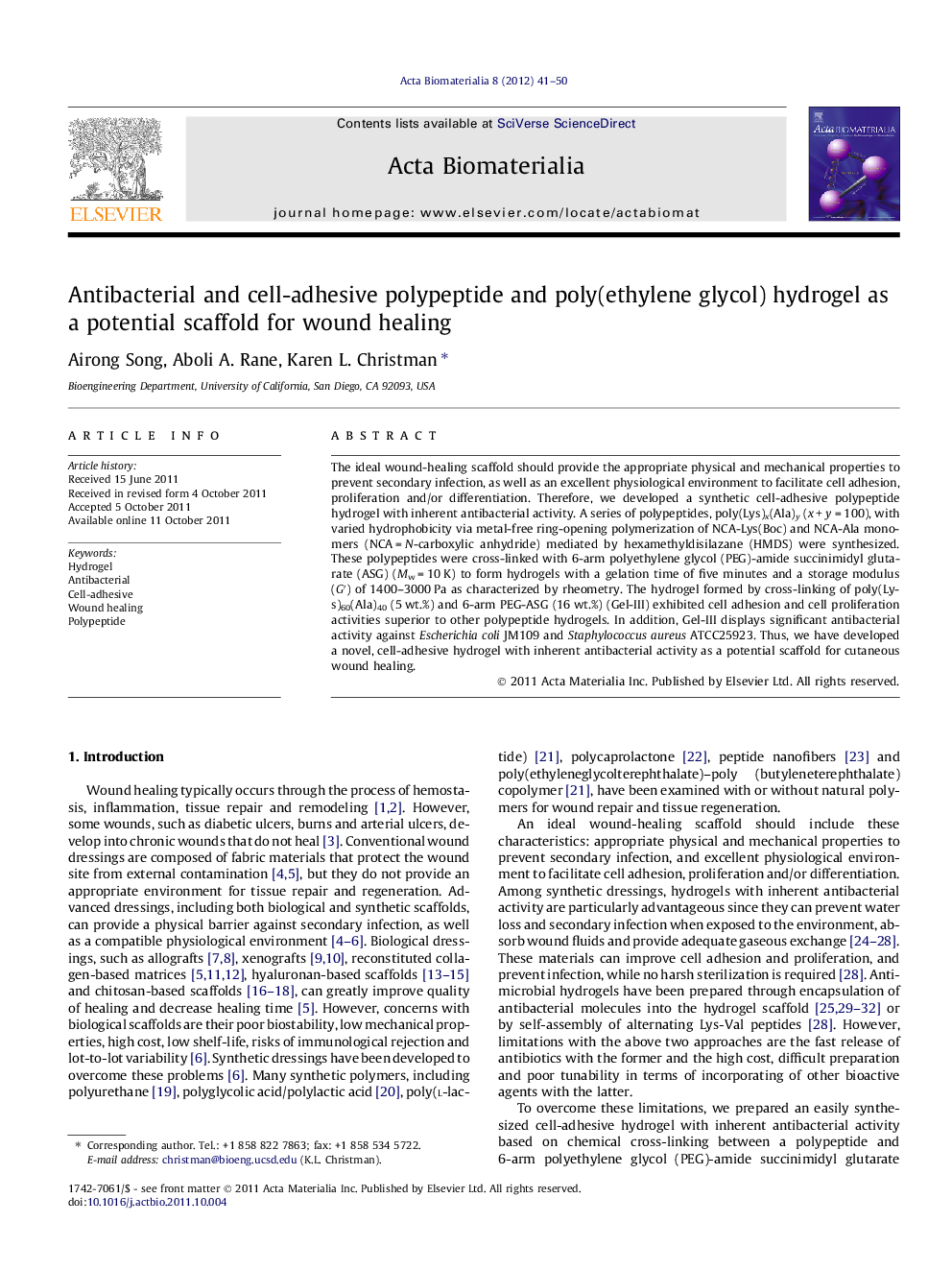| کد مقاله | کد نشریه | سال انتشار | مقاله انگلیسی | نسخه تمام متن |
|---|---|---|---|---|
| 10160056 | 65 | 2012 | 10 صفحه PDF | دانلود رایگان |
عنوان انگلیسی مقاله ISI
Antibacterial and cell-adhesive polypeptide and poly(ethylene glycol) hydrogel as a potential scaffold for wound healing
دانلود مقاله + سفارش ترجمه
دانلود مقاله ISI انگلیسی
رایگان برای ایرانیان
کلمات کلیدی
موضوعات مرتبط
مهندسی و علوم پایه
مهندسی شیمی
بیو مهندسی (مهندسی زیستی)
پیش نمایش صفحه اول مقاله

چکیده انگلیسی
The ideal wound-healing scaffold should provide the appropriate physical and mechanical properties to prevent secondary infection, as well as an excellent physiological environment to facilitate cell adhesion, proliferation and/or differentiation. Therefore, we developed a synthetic cell-adhesive polypeptide hydrogel with inherent antibacterial activity. A series of polypeptides, poly(Lys)x(Ala)y (x + y = 100), with varied hydrophobicity via metal-free ring-opening polymerization of NCA-Lys(Boc) and NCA-Ala monomers (NCA = N-carboxylic anhydride) mediated by hexamethyldisilazane (HMDS) were synthesized. These polypeptides were cross-linked with 6-arm polyethylene glycol (PEG)-amide succinimidyl glutarate (ASG) (Mw = 10 K) to form hydrogels with a gelation time of five minutes and a storage modulus (Gâ²) of 1400-3000 Pa as characterized by rheometry. The hydrogel formed by cross-linking of poly(Lys)60(Ala)40 (5 wt.%) and 6-arm PEG-ASG (16 wt.%) (Gel-III) exhibited cell adhesion and cell proliferation activities superior to other polypeptide hydrogels. In addition, Gel-III displays significant antibacterial activity against Escherichia coli JM109 and Staphylococcus aureus ATCC25923. Thus, we have developed a novel, cell-adhesive hydrogel with inherent antibacterial activity as a potential scaffold for cutaneous wound healing.
ناشر
Database: Elsevier - ScienceDirect (ساینس دایرکت)
Journal: Acta Biomaterialia - Volume 8, Issue 1, January 2012, Pages 41-50
Journal: Acta Biomaterialia - Volume 8, Issue 1, January 2012, Pages 41-50
نویسندگان
Airong Song, Aboli A. Rane, Karen L. Christman,